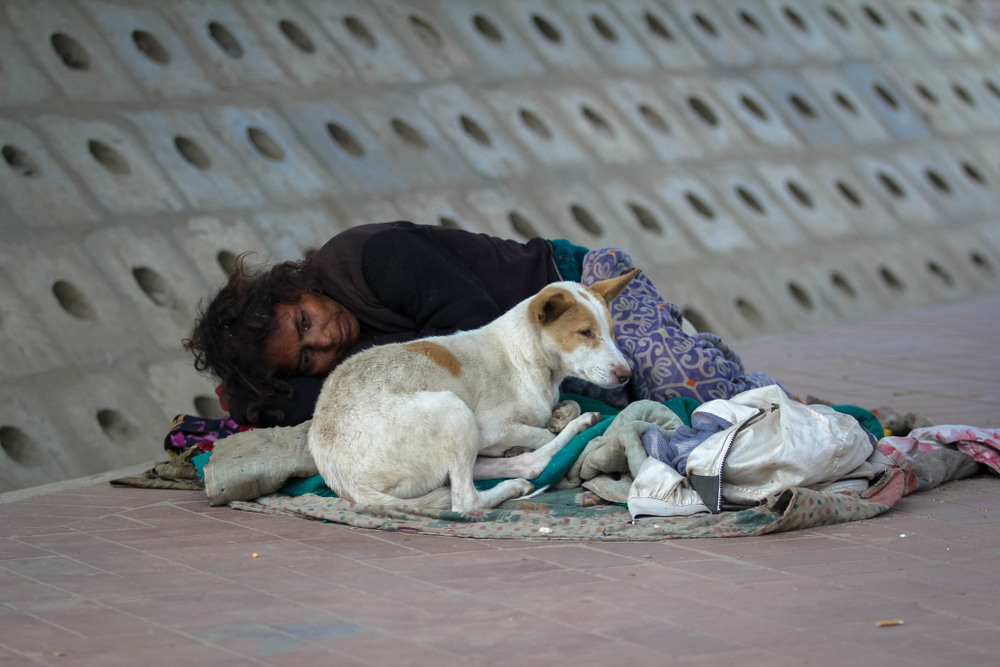Three in five homeless people surveyed across 15 Indian cities have said they were born in the city they now live in, a situation implying families trapped in destitution down the generations.
A strong caste link too has emerged, with Dalits accounting for over a third of the homeless, double their share of India’s population.
The European Union-funded study by the NGOs Indo-Global Social Service Society and Organisation Functioning For Eytham’s Respect (Offer) surveyed 4,382 homeless people in 15 cities across five states.
Of the 40 per cent among the homeless that were migrants, 78.9 per cent had migrated in search of livelihood, followed by 13.7 per cent who did so because of family conflict.
That 60 per cent of the homeless were natives of their city indicated an “inter-generation cycle of urban poverty and homelessness” of populations that face a “continuous struggle to secure their rights and entitlements,” says the survey report, released on Thursday to mark World Homeless Day.
The survey found that the Scheduled Castes (36 per cent) made up the highest proportion of the urban homeless, followed by the Scheduled Tribes (23 per cent), Other Backward Classes (21 per cent) and the rest (20 per cent).
“It clearly shows that the caste system in India makes people economically, socially and politically deprived and pushes them to the margins and an inhuman condition,” says the report.
About 70.5 per cent of the homeless surveyed had some form of identification, and 66.4 per cent had Aadhaar.
Voter cards were found with 39.5 per cent, among whom 94 per cent cast their votes. This was way higher than the turnout witnessed in the previous Lok Sabha polls, which at 67.11 per cent was still a record high.
Yet, despite their high voting percentage, 77.7 per cent of the homeless received none of their entitlements from the government, the survey notes.
Only 18.1 per cent could access subsidised food rations, and 12 per cent used the homeless shelters.
Among the reasons the rest cited for not using these shelters were poor living conditions (19.5 per cent), lack of space (11.8 per cent), lack of access to shelters specific to their gender or family needs (3.1 per cent) unwelcome treatment at shelters (8 per cent), lack of basic amenities (7 per cent), harassment (2.4 per cent) and the fear of theft (8.4 per cent).
Only 58.4 per cent of the homeless had access to health services, and 17.5 per cent of them lived more than 4km away from the nearest health facility.
About 79 per cent had been evicted for squatting, mostly by municipal bodies and the police. Some 14.7 per cent reported harassment — by the police (67 per cent of the respondents) and criminals (39 per cent), which means some faced harassment from both. Most of the harassment was in the form of verbal abuse.
About 17.5 per cent of the homeless survived by begging and 82.1 per cent were day labourers, with construction workers accounting for the highest share of 23.6 per cent.
The report recommends that the policy makers begin “thinking beyond shelters and start imagining possible ways of ensuring housing continuum and… the homeless (people’s) access to the basic services and entitlements as envisaged in the present policy schemes”.
It speaks of the “acute need to support and encourage programmes like vocational training and skill building….”
The cities surveyed were Patna, Gaya, Muzaffarpur, Ranchi, Dhanbad, Jamshedpur, Chennai, Madurai, Coimbatore, Visakhapatnam, Guntur, Vijayawada, Mumbai, Pune and Nashik.










